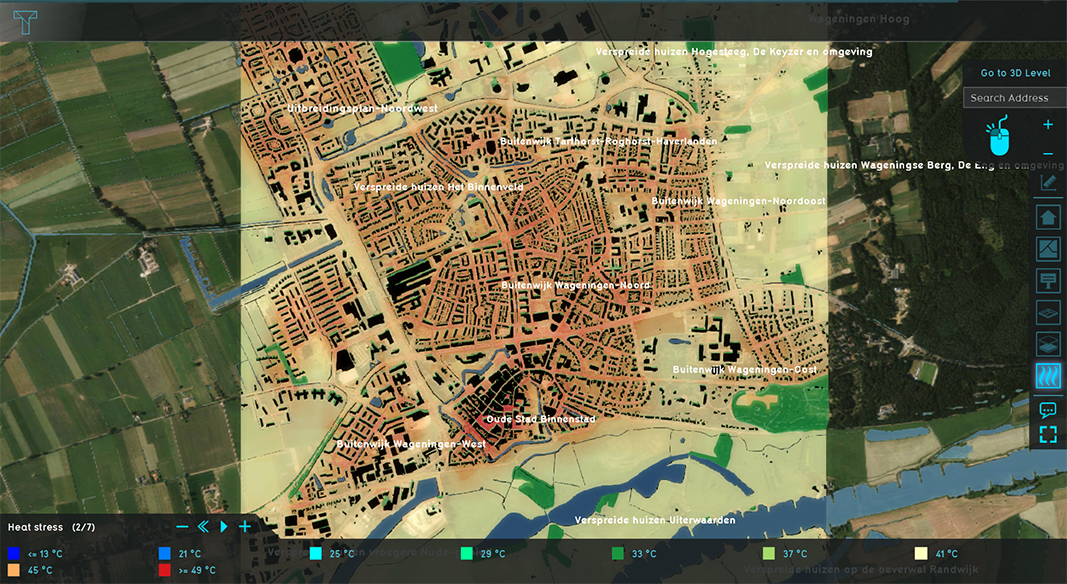Pet result type (Heat Overlay): Difference between revisions
Jump to navigation
Jump to search
mNo edit summary |
mNo edit summary |
||
| Line 13: | Line 13: | ||
|} | |} | ||
[[File:DPRA_Heatstress_overlay.PNG|x350px|thumb|right|PET (physiological equivalent temperature or heat stress) result type overlay (Wageningen)]] | [[File:DPRA_Heatstress_overlay.PNG|x350px|thumb|right|PET (physiological equivalent temperature or heat stress) result type overlay (Wageningen)]] | ||
The physiological equivalent temperature is a value which expresses the effective outdoor temperature of a (complex) outdoor situation as an equivalent (simple) indoor situation. The equivalence is determined as the point where the heat balance of the human body is balanced with the surrounding environment.<ref name="pet" /> | |||
==References== | |||
<references> | |||
<ref name="pet">Biometeorology education and research network. Physiological equivalent temperature. https://www.biomet-education.net/glossary/physiological-equivalent-temperature/. Last visited: 16-12-2019</ref> | |||
</references> | |||
{{Template:HeatOverlay_result_type_nav}} | {{Template:HeatOverlay_result_type_nav}} | ||
Revision as of 11:05, 16 December 2019
| Image | Result type | Unit | Display mode | Description |
|---|---|---|---|---|
| PET | °C | Date-Time | The calculated physiological equivalent temperature. |
The physiological equivalent temperature is a value which expresses the effective outdoor temperature of a (complex) outdoor situation as an equivalent (simple) indoor situation. The equivalence is determined as the point where the heat balance of the human body is balanced with the surrounding environment.[1]
References
- ↑ Biometeorology education and research network. Physiological equivalent temperature. https://www.biomet-education.net/glossary/physiological-equivalent-temperature/. Last visited: 16-12-2019





